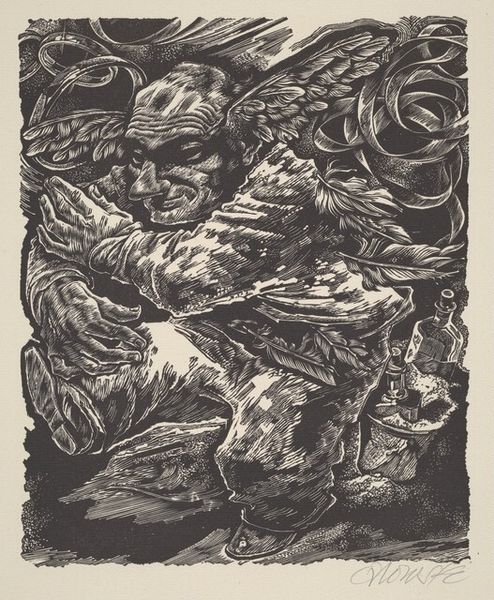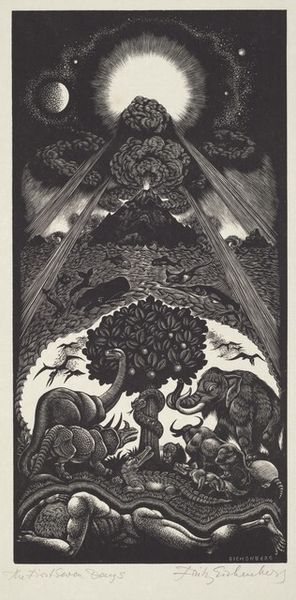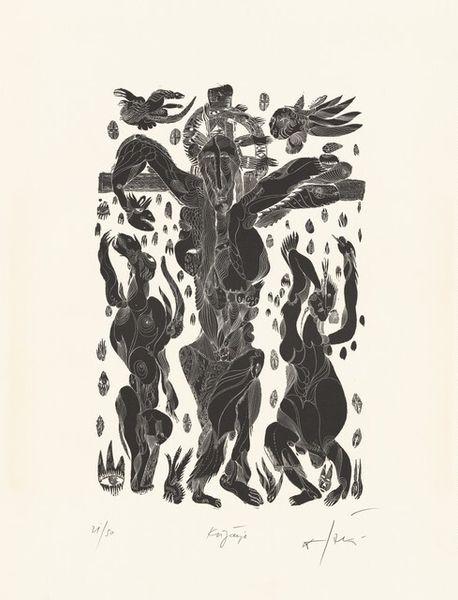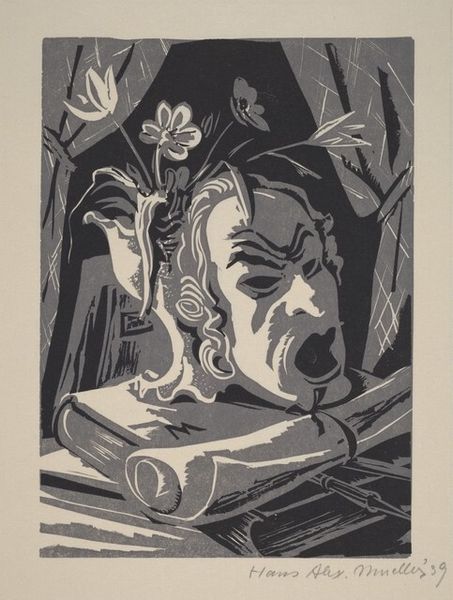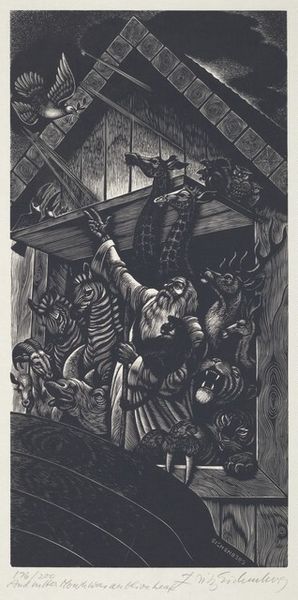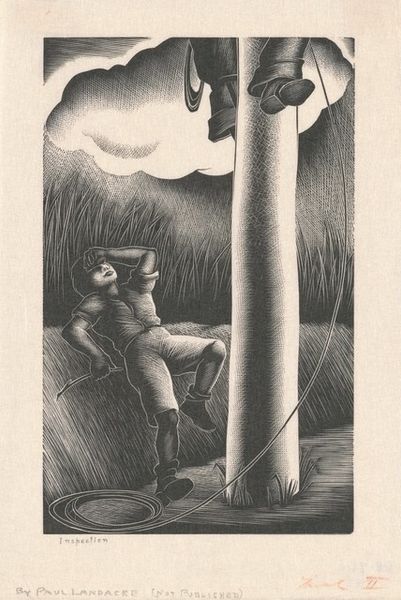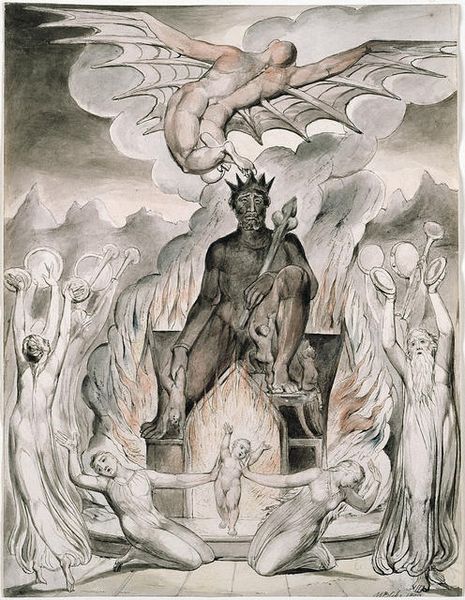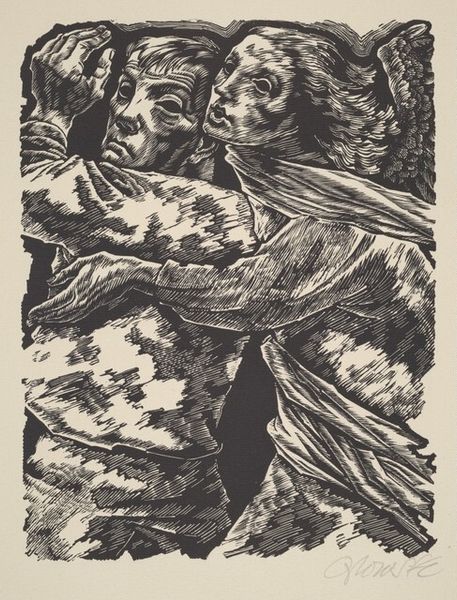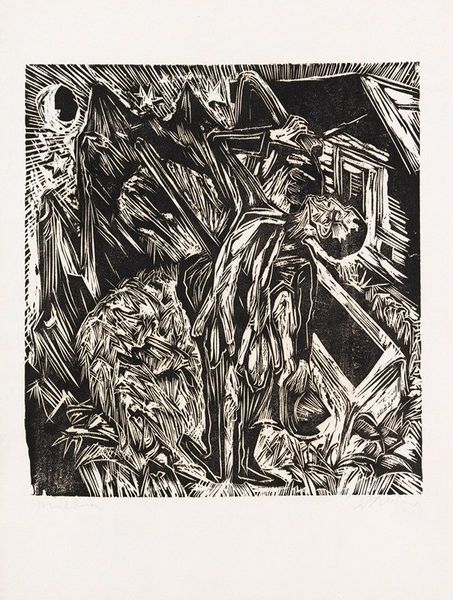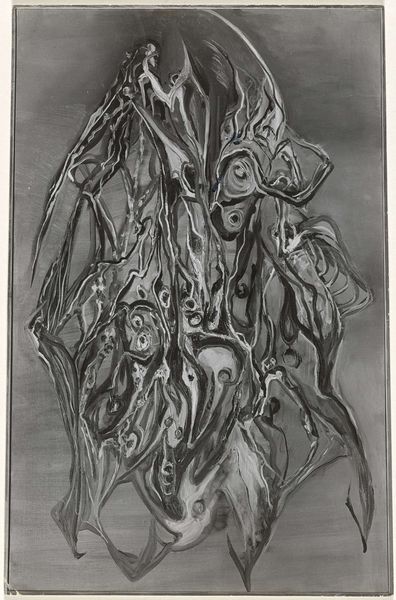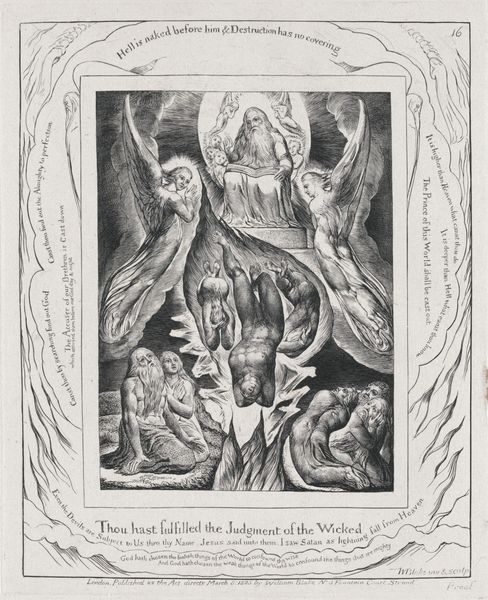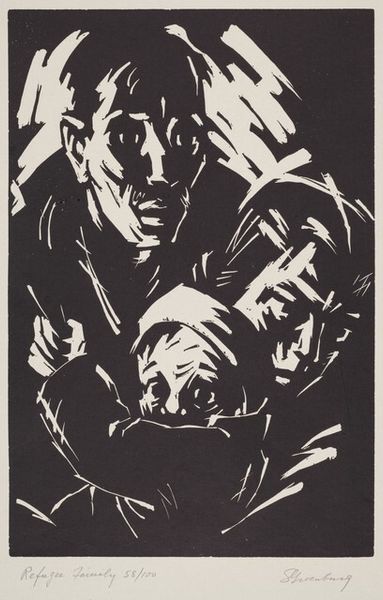
print, woodcut
#
portrait
#
narrative-art
# print
#
caricature
#
figuration
#
social-realism
#
woodcut
#
mexican-muralism
#
history-painting
Dimensions: image: 56.52 × 40.16 cm (22 1/4 × 15 13/16 in.) sheet: 68.58 × 50.17 cm (27 × 19 3/4 in.)
Copyright: National Gallery of Art: CC0 1.0
Curator: Dosamantes created this arresting woodcut, called "Protesta," around 1945. The stark black and white immediately evokes powerful feelings, doesn't it? Editor: Absolutely. There’s something very raw and immediate about the composition—the graphic boldness and the contrast. It's as if the artist is carving out the very essence of… what is it exactly? Suffering? Defiance? Curator: Well, Dosamantes was deeply involved with the Taller de Gráfica Popular, a workshop in Mexico City known for its social and political prints. Their work championed the rights of workers and peasants. Seeing this, does that reading resonate for you? Editor: It does, especially given the figures standing in those giant, open hands, and with those fists raised above—is that an all-seeing eye in the center? The composition seems almost architectural, building a visual argument about the vulnerable supported by the strong. What is your read on this relationship of hands? Curator: It’s a potent image of solidarity. These hands could be interpreted as those of the people, supporting and protecting the figures below. But perhaps, it is meant as the state, oppressing those vulnerable populations. I would argue there's a deliberate ambiguity here, challenging viewers to confront power dynamics. What this print does, is visually participates in that wider rhetoric, advocating for change and making powerful claims within Mexico's visual landscape at that time. Editor: So the "protesta" isn't just an event but a stance, embedded in the very form. I am really seeing more clearly the artistic agency claimed through printmaking and its socio-political dimensions here in the mid 1940’s. Curator: Indeed. It makes you consider the public role of art. Editor: Absolutely. The piece leaves one contemplating not just the image but its potential as a tool for social action. Curator: A perspective the artist surely sought to ignite.
Comments
No comments
Be the first to comment and join the conversation on the ultimate creative platform.
